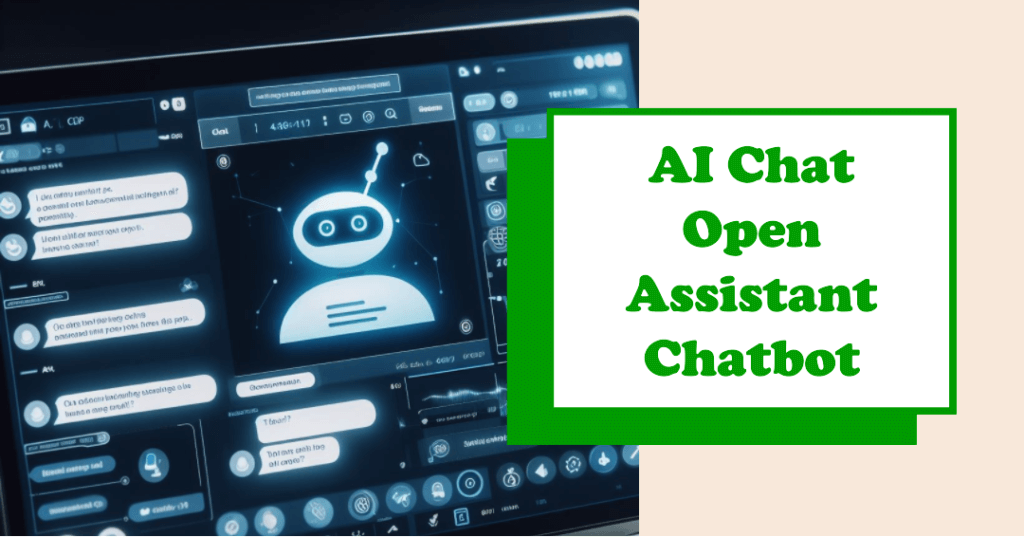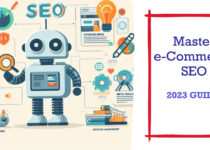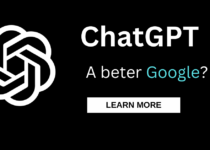AI Chat Open Assistant Chatbot
The Evolution of AI Chatbots: Unraveling the OpenAI GPT-3.5 Assistant Chatbot

Introduction
In recent years, the world of artificial intelligence has witnessed remarkable advancements, and one of the most intriguing developments is the evolution of chatbots. These virtual assistants have transformed from rudimentary rule-based systems to sophisticated conversational agents, thanks to the convergence of AI, machine learning, and natural language processing. At the forefront of this transformation stands the OpenAI GPT-3.5 Assistant Chatbot, a testament to the power of AI in natural language understanding and generation. In this article, we’ll explore the journey of AI chatbots, the capabilities of the OpenAI GPT-3.5 Assistant Chatbot, and the applications and challenges it presents.
The Rise of AI Chatbots
Chatbots have come a long way from their initial days as basic, rule-driven programs. Early chatbots struggled to provide engaging and intelligent conversations, often frustrating users with their limited capabilities. However, the advent of advanced AI technologies has heralded a new era of chatbots. These modern AI chatbots employ machine learning algorithms, particularly deep learning, to process and understand natural language, enabling them to simulate human-like conversations and provide contextually relevant responses.
Introducing OpenAI GPT-3.5 Assistant Chatbot
OpenAI, renowned for its pioneering work in AI research and development, has played a significant role in shaping the chatbot landscape with its GPT-3.5 Assistant Chatbot. Powered by the GPT-3.5 model, an advanced iteration of the GPT series, this chatbot leverages deep learning and natural language processing to understand context, generate human-like text, and provide coherent responses to a wide range of user queries.
Capabilities of OpenAI GPT-3.5 Assistant Chatbot
1. Natural Language Understanding
- Understanding Complex Natural Language: GPT-3.5 can interpret user inputs of varying complexity, making the conversation feel more human-like.
- Contextual Awareness: The chatbot excels at comprehending context, allowing for more meaningful and engaging interactions.
2. Language Generation
- Coherent and Contextually Accurate Responses: GPT-3.5 consistently generates responses that are coherent, contextually accurate, and relevant.
- Human-like Text Generation: The chatbot’s text generation is so natural that it’s often indistinguishable from human-authored content.
3. Multilingual Proficiency
- Global Communication: GPT-3.5’s multilingual capabilities enable it to communicate in multiple languages, making it a valuable tool for international users.
- Inclusivity: Its ability to converse in various languages reflects the chatbot’s inclusivity, breaking down language barriers.
4. Contextual Conversation
- Continuity in Conversations: GPT-3.5 can maintain context throughout a conversation, remembering and responding to previous user queries, resulting in richer and more personalized interactions.
5. Content Creation
- AI-Powered Content Generation: Beyond conversations, GPT-3.5 can create articles, stories, code, and more, saving time and effort for content creators while ensuring high-quality output.
- Time and Effort Savings: Content creators find it invaluable for generating ideas and drafting pieces, streamlining their content creation process.
Applications of OpenAI GPT-3.5 Assistant Chatbot
1. Customer Support
- Enhancing Customer Satisfaction: GPT-3.5 aids in providing instant responses to customer inquiries, troubleshooting, and guidance, ultimately improving customer satisfaction.
- Reducing Human Support Agent Workload: The chatbot lightens the load on human support agents by handling routine customer inquiries efficiently.
2. Content Generation
- Content Creation Assistance: Content creators, bloggers, and writers leverage GPT-3.5 for content ideas, article writing, and creative content generation.
- Saving Time for Content Creators: By automating parts of the content creation process, the chatbot saves creators valuable time.
3. Language Translation
- Breaking Language Barriers: GPT-3.5’s real-time multilingual communication capability makes it a powerful tool for bridging language gaps in global communication.
- Real-Time Multilingual Communication: It facilitates language translation, promoting effective cross-border communication.
4. Education
- Virtual Tutoring: In the field of education, the chatbot acts as a virtual tutor, providing explanations and answering questions to assist students in their studies.
- Academic Assistance: GPT-3.5 aids learners in gaining a deeper understanding of various subjects and concepts.
5. Healthcare
- Providing Health Information: Healthcare organizations use chatbots like GPT-3.5 to offer information, answer common health-related questions, and assist in scheduling appointments.
- Streamlining Patient Interactions: The chatbot streamlines interactions between patients and healthcare providers, optimizing healthcare services.
Challenges and Ethical Considerations
1. Bias
- Addressing Biases in Chatbots: Developers must actively work to reduce biases in chatbots, ensuring that responses are fair and unbiased.
- Promoting Fairness and Equity: Striving for fairness and equity in chatbot interactions is crucial, especially when chatbots are used in critical applications.
2. Privacy
- Data Privacy and Security Concerns: The use of chatbots often involves sharing personal data, necessitating the implementation of robust data privacy and security measures.
- Maintaining User Trust: Upholding user trust by safeguarding their personal information is vital for responsible chatbot usage.
3. Misinformation
- Ensuring Information Accuracy: Developers must put measures in place to ensure that the information generated by chatbots is accurate and reliable.
- Reliable Content Generation: The responsibility lies with developers and users to validate the information provided by chatbots to avoid the spread of misinformation.
4. Addiction
- Technology Addiction Concerns: Over-reliance on chatbots may lead to technology addiction, reducing human interaction and potentially having adverse effects on users.
- Balancing Human Interaction: Finding the right balance between human interaction and chatbot usage is a key consideration for responsible adoption.
Conclusion
As AI chatbots continue to evolve, they inch closer to simulating human interaction. The OpenAI GPT-3.5 Assistant Chatbot exemplifies the incredible progress made in this field. While it offers immense potential, responsible usage is crucial, and addressing challenges such as bias, privacy, misinformation, and addiction is vital. The future of AI-powered assistance is promising, offering the potential for technology to engage with users in genuinely conversational and meaningful ways while promoting responsible and ethical development and usage.
Related Posts

Master E-Commerce SEO in 2023

ChatGPT – All you need to know

Travel with your pet in Train
About Author
Anish
Digital Marketer, passionate about travel and adventure sports. Follow on Facebook Profile - https://www.facebook.com/anish.sudarsan/ & Instagram Profile - https://www.instagram.com/anishsudarsan/